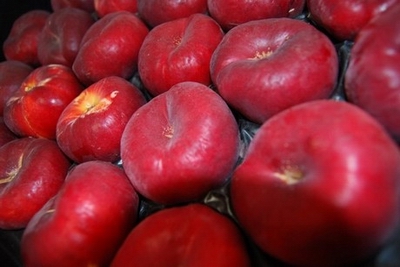
New nectarines production
IMIDA's director, Adrian Martinez, said that, "the Region of Murcia is one of the most dynamic communities in what refers to varietal renewal". In this regard, he noted that, "there was a big change with the Paraguayans or flats that revolutionized consumer trends towards flat shapes. New varieties of nectarines are hairless Paraguayans, and what we're looking for are varieties that will adapt well to the region's soil and climate. This will be a new revolution, just like the seedless grapes and the seedless watermelon were", he added
According to the researchers Jose Cos and Antonio Carrillo, IMIDA's Horticulture team makes numerous crosses every year to get varieties that adapt better, from the coast to the areas of Cieza and Calasparra. These are varieties of both white and yellow flesh with a red colour and good firmness, which can withstand being transported.
The first nectarines that were planted in the region were the result of breeding programs carried out in France and Italy. However, many of them are being uprooted due to their poor adaptation to the climatic conditions of the region, as they require many hours of cold.
Genetic improvement
The genetic improvement programs carried out by IMIDA in collaboration with Novamed SL have achieved new varieties better adapted to the soil and climate of the region and with a great organoleptic quality.
José Cos predicts a bright future for the new nectarines, whose first yields are due next year. In this regard, he noted that researchers are still trying to improve the taste, because that is a decisive point in achieving a critical mass among consumers, giving the product an added value.





